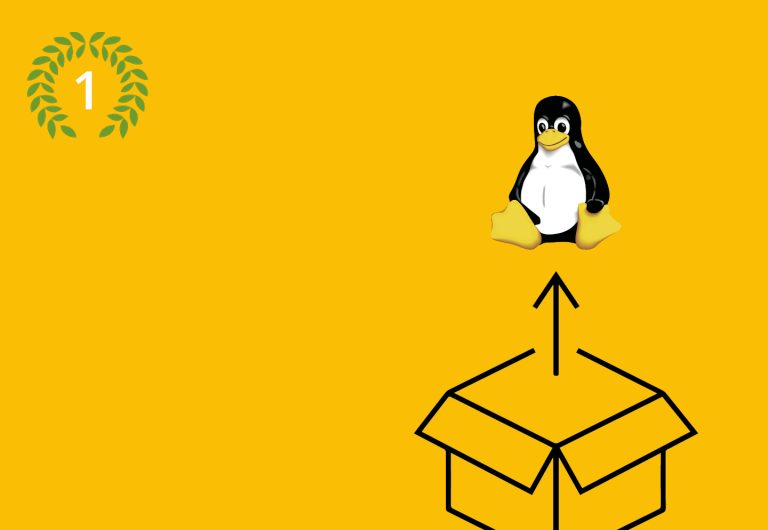The Many Meanings of Linux, Part 1 of 2

A startling title appeared in the prestigious Yale Law Journal in 2002. At that time, academics, governments, and companies were exploring an exciting and potentially liberating idea: to take input about policies and products not just from duly credentialed experts, but from the general public. Pushing forward that narrative, Harvard Law Professor Yochai Benkler published a Yale Law Journal paper with the title “Coase’s Penguin, or, Linux and The Nature of the Firm.”
How did Linux make it into a leading law professor’s research? Why did Benkler feature Linux as a data point in “a much broader social-economic phenomenon” that could overturn centuries of corporate and government behavior?
Benkler was not alone in elevating Linux to a principle and an exemplar. This article explores the many meanings that Linux has had since its emergence in the early 1990s. I explain how Linux altered history by:
- Providing a foundation for an entirely free computer system
- Proving to observers in all fields the viability of free and open source software
- Triggering a move of companies toward open standards and open source implementations of core parts of their software
- Bringing modern software within the reach of millions more people
- Restructuring the computer industry through virtualization, containers, and the cloud
- Sparking interest in the newly recognized phenomenon of crowdsourcing
- Accelerating development of new, low-cost hardware platforms
This part of the article will cover the first four points in the list, and an upcoming part will cover the other three.
Foundation for a Free Operating System
People have released free software since the beginning of computing, but few have comprehensively assessed user needs and addressed their wide range. Most free software developers were happy to contribute a library or tool that ran along with some vendor’s computer system. The early free software project with the grandest vision was Berkeley Software Distribution (BSD), which started as a set of tweaks to Bell Labs’ non-free Unix and evolved into an independent project with a broad mission. Although variants of BSD played important roles in many computing companies, it was a niche phenomenon compared to Microsoft and later Apple.
The GNU project was even more of a niche affair. This one also had a big scope: a band of developers methodically turned out one tool after another to recreate Unix from the ground up. Although the tools were all important developers—particularly the impressive compiler and C/C++ libraries—few held any interest for the average computer user. End-user projects such as GNU Cash accounting software were rare and difficult to use. The central selling point for the GNU tools was the GNU license, which guaranteed their freedom for all to use and share.
Whether because of their license, their quality, or their widespread use by C programmers, it was the GNU tools that Linus Torvalds used to create Linux. And as the importance of Linux grew, so did GNU. The development of GNU and Linux cannot be disentangled; that is why I agree with GNU proponents that full distributions of the operating system should be called GNU/Linux. (But I use the term Linux loosely throughout this article for convenience.)
What did a fully free software stack mean for the general public? It created an explosion of experimentation, especially in the areas of embedded systems, small Internet service providers and other Internet services, and cheap computers for underserved populations around the world. The free stack did even more for corporate data centers. We’ll examine all these phenomena in later sections.
People running a completely free GNU/Linux stack would still need a proprietary computer and proprietary firmware. But eventually, both of these gaps were addressed as well. A growing open hardware movement, covered in another article, allows the distribution and customization of open designs. Many free firmware projects also exist.
Proving the Viability of Free and Open Source Software
Until the 1990s there was no debate among businesspeople: to bring an idea to life in software, you needed to form a company and hire a team of experts to code up the product. The waterfall model, where a team moved ponderously from requirements through development and testing to production, was almost universal. Until the dot-com boom (a bubble in the late 1990s created by irrational exuberance among investors), a software project couldn’t get off the ground until the accountants and marketing staff had figured out how to make a profit from it.
Free software seemed to be taking place in a parallel universe. No one with money and institutional clout took it seriously.
Yes, Microsoft and AT&T and other companies shoved BSD innovations into their own proprietary software. And in the mid-1980s, the GNU C/C++ compiler jolted developers by outperforming all the commercial compilers. These isolated phenomena were hints that something powerful was going on with free software—but they were technically obscure enough to be ignored by policy-makers.
It was finally Linux that blew apart the complacence at the CxO level. Companies came to appreciate the perennial benefits of free software. After these companies get used to depending on free software and find it robust and reliable, they are more ready to open their own software. By then, they may be employing many developers who understand and love free software, and who urge the companies to contribute to it. I’ll tell more of this story in the next section (“The Move Toward Open Standards and Open Source Implementations”) and cover the importance of Linux to governments in the one that follows (“Bringing Software to Millions of People”).
The Move Toward Open Standards and Open Source Implementations
Who would spend hard cash to develop software and give it away? This was the taunt aimed at free software by its critics for decades. But now it happens every day. Let’s look at how the shift has taken place.
As explained in the section “Proving the Viability of Free and Open Source Software,” businesses used to hide their source code and make sure no one else could derive benefit from their investment; no other course of action seemed rational. Linux taught them the opposite approach: if they share software, everyone moves ahead faster. Moving fast is critical to success in business during the twenty-first century, so free software becomes crucial.
Historically, computer companies were the first to learn the importance of collaborative development. Name a large, successful computer company—Intel, Amazon, Microsoft, Oracle, whatever—and you can find them working on free software projects. They may keep their core software proprietary (a trend I covered a few years under the term closed core), but they contribute a lot of their work to the community for a number of reasons, including the hope that it will be enhanced by other companies’ and individuals’ contributions. The demonstrable business value of free software propelled large corporate conferences such as LinuxWorld (Figure 1). Google’s Android, an important but different kind of project, will be mentioned in a later section.

contest held at LinuxWorld 2004
Every company is a bit of a computing company nowadays, so free software appeals to them too. A good example is the automobile industry, which is loading new cars with software, and which has an alliance dedicated to free software in cars. Naturally, their output is based on Linux.
The open source movement has democratized hiring, to some extent. Aspiring developers contribute to free software projects and cite those contributions in job interviews. The popular GitHub and GitLab sites expose each person’s contributions to make them highly visible to employers.
Finally, this rush to open source drives the creation of professional organizations such as the Linux Professional Institute. When companies depend on skills, they want to see demonstrated proficiency among job applications, hence the development of certification programs such as those offered by LPI.
Bringing Software to Millions of People
Like so many things affluent people take for granted—drinkable water, for instance—computer access is strongly associated with economics. Middle-class people in developed countries automatically license a copy of Windows for home use. But in less wealthy countries, access is much more difficult—even in government offices. That’s why a 2004 study determined that, “For every two dollars’ worth of software purchased legitimately, one dollar’s worth was obtained illegally.”
Yes, huge swaths of the world’s population use software in violation of the software vendors’ rules. At times this is tolerated (because the vendors hope the users will eventually turn into paying customers); at other times crackdowns occur. But there seemed to be no alternative until Linux came along.
Nobody has to feel guilty or furtive using Linux, because the whole system is free software. Many governments—particularly in Latin America—declared a preference for free software in the decade or so after Linux became well known.For various reasons, the most idealistic free software adoptions failed (Munich was one highly publicized case of migration that has undergone turmoil), but Linux makes freedom possible.
Special computer systems were designed for low-income and underprivileged areas. Nicholas Negroponte’s One Laptop Per Child garnered the most hype, but it didn’t live up to the promise. More relevant now are the many distributions for schools and schoolchildren, covered in another article.
The Linux Professional Institute works with dozens of companies, particularly professional training firms, who base their business models on Linux and free software. Located in places as different as Brazil, Bulgaria, and Japan, these companies know that Linux and free software provide a universal platform for education and advancement. The people who take these courses and obtain LPI certifications can build a better economy in their countries. (Many immigrate to more developed countries with higher salaries, but a good number stay at home.)
The next part of this article will cover the other three meanings of Linux listed at the start of the article.
<< Read the previous post of this series | Read the next post of this series >>
